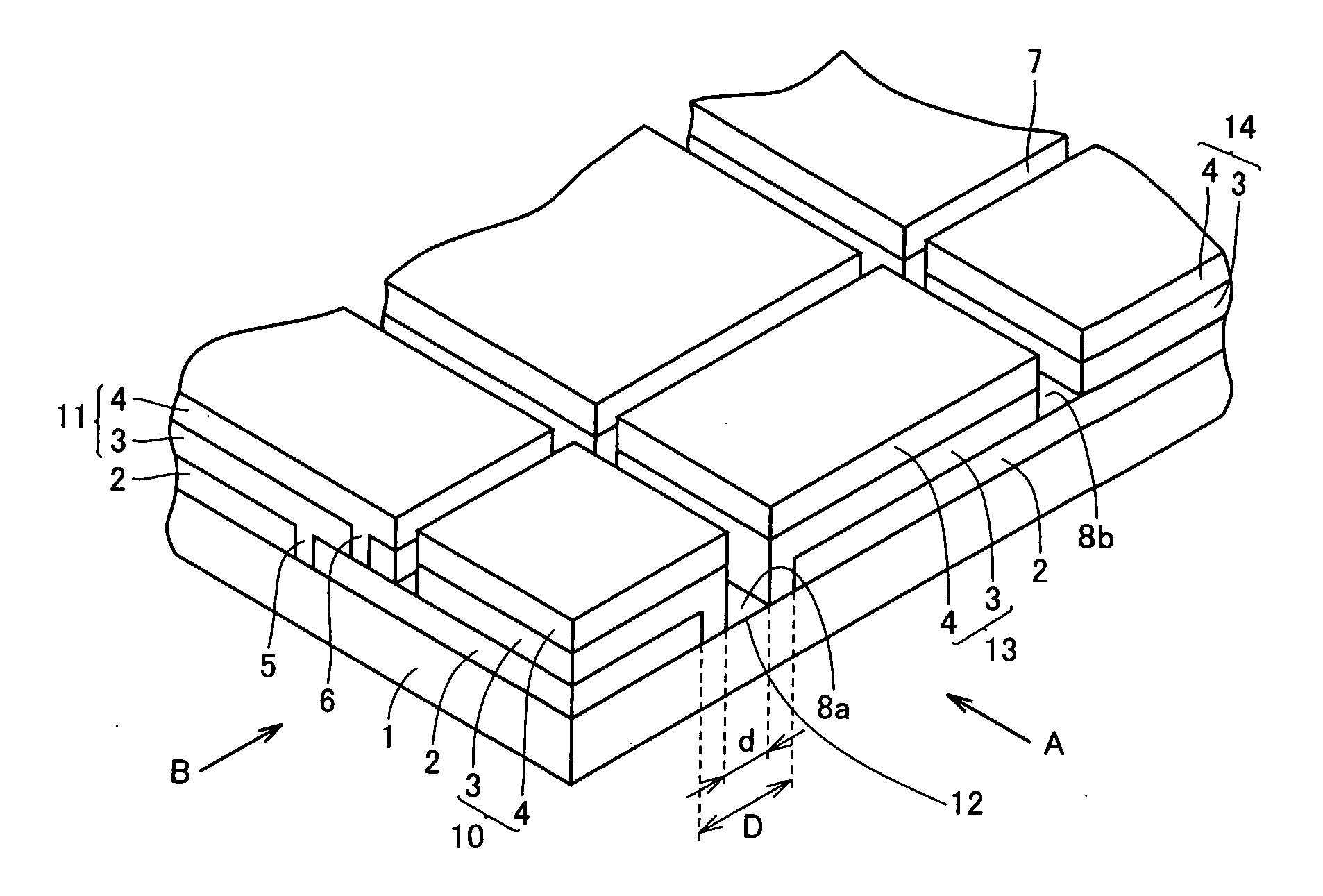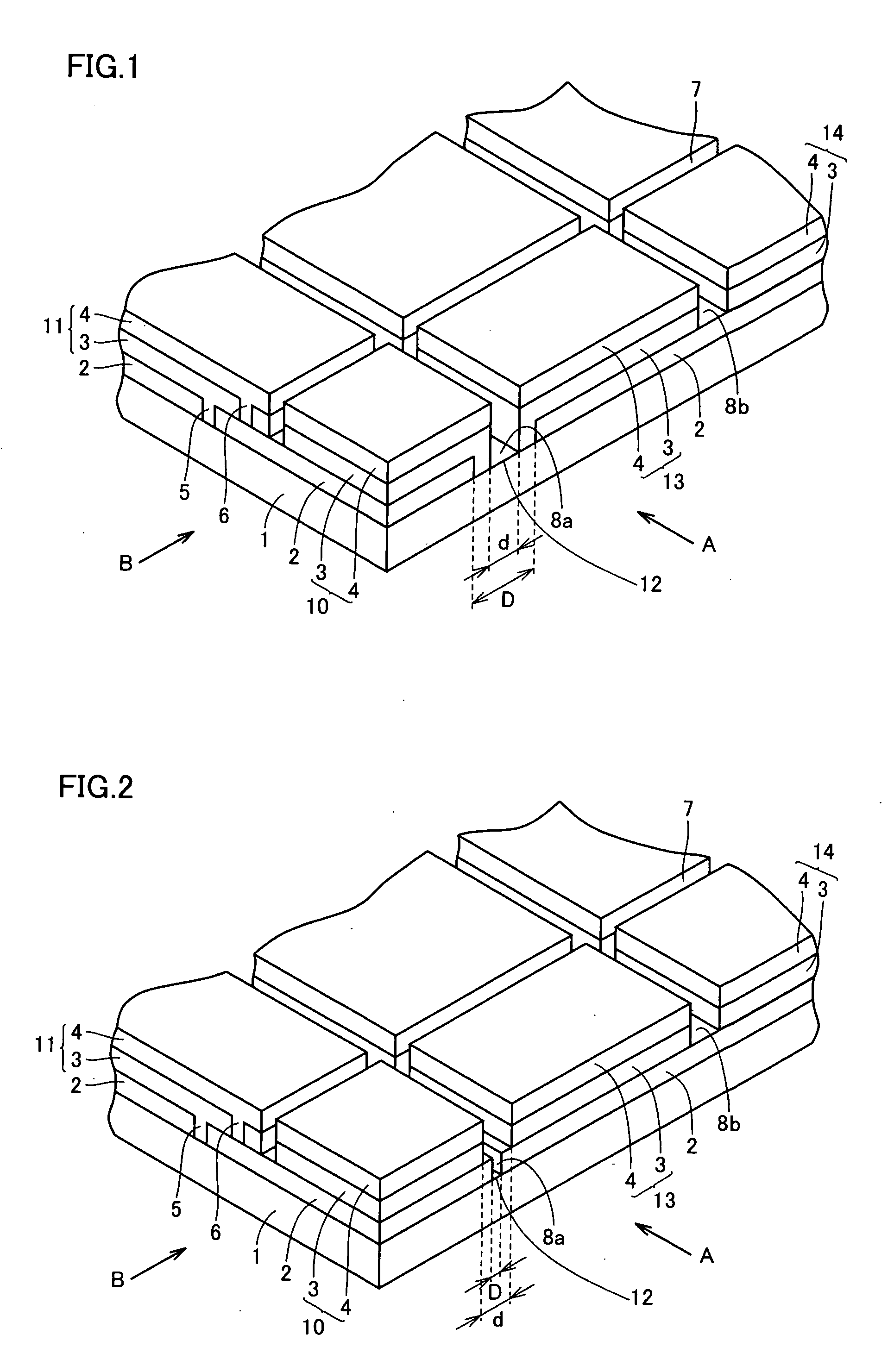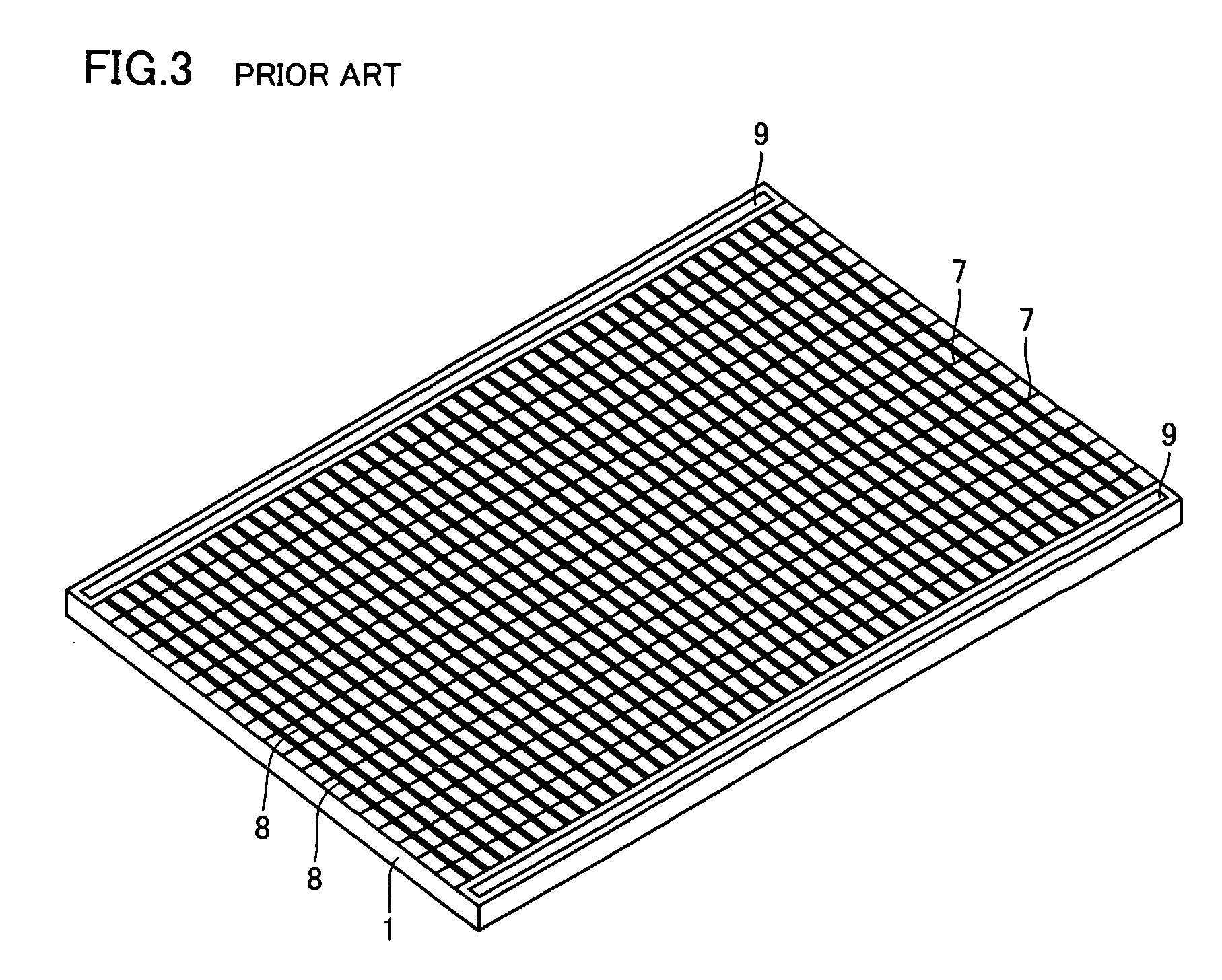Thin film solar cell and manufacturing method thereof
a solar cell and film technology, applied in the direction of pv power plants, light radiation electric generators, generators/motors, etc., can solve the problems of reducing the overall conversion efficiency, reducing production yield, and difficult to form the second opening trench, etc., to suppress the degradation of conversion efficiency and high production yield
- Summary
- Abstract
- Description
- Claims
- Application Information
AI Technical Summary
Benefits of technology
Problems solved by technology
Method used
Image
Examples
example 1
[0048] A glass substrate (Asahi Glass, type U) with a transparent conductive film of SnO2, having the size of 560 mm (width)×925 mm (length) was prepared, and by irradiation of YAG fundamental wave laser beam from the side of the glass substrate, a part of the transparent conductive film was removed in a strip in the width direction of the glass substrate by laser scribing, whereby the second separation trench was formed. The second separation trench had the width of 300 μm, and five second separation trenches were formed at a pitch of 150 mm. Further, in the direction orthogonal to the direction of formation of the second separation trenches (along the length of the glass substrate), by irradiation of YAG fundamental wave laser beam, a part of the transparent conductive film was removed in a strip by laser scribing, and the first separation trench separating the transparent conductive film was formed. The width of the first separation trench was 100 μm, and three first separation t...
example 2
[0054] A glass substrate (Asahi Glass, type U) with a transparent conductive film of SnO2, having the size of 560 mm (width)×925 mm (length) was prepared, and by irradiation of YAG fundamental wave laser beam from the side of the glass substrate, a part of the transparent conductive film was removed in a strip shape in the length direction of the glass substrate by laser scribing, whereby the first separation trench was formed. The first separation trench had the width of 80 μm, and four first separation trenches were formed at a pitch of 150 mm.
[0055] Thereafter, on the transparent conductive film and on the first separation trenches, a photoelectric conversion layer was formed. The photoelectric conversion layer had a tandem structure including p-layer, i-layer and n-layer of amorphous silicon and p-layer, i-layer and n-layer of micro-crystal silicon stacked successively from the side of the glass substrate. Here, the p-layer, i-layer and n-layer of amorphous silicon and p-layer,...
PUM
 Login to View More
Login to View More Abstract
Description
Claims
Application Information
 Login to View More
Login to View More - R&D
- Intellectual Property
- Life Sciences
- Materials
- Tech Scout
- Unparalleled Data Quality
- Higher Quality Content
- 60% Fewer Hallucinations
Browse by: Latest US Patents, China's latest patents, Technical Efficacy Thesaurus, Application Domain, Technology Topic, Popular Technical Reports.
© 2025 PatSnap. All rights reserved.Legal|Privacy policy|Modern Slavery Act Transparency Statement|Sitemap|About US| Contact US: help@patsnap.com



